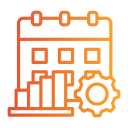Reliability, Backups, and Business Continuity
Many cloud vendors commit to high uptime SLAs and replicate data across regions. Ask about maintenance windows, incident history, and restore objectives. Transparency and tested playbooks matter more than glossy uptime charts on a marketing page.
Reliability, Backups, and Business Continuity
Traditional servers can be robust with redundancy, but many offices rely on one aging machine under a desk. Backups exist until the restore test fails. Honest drills expose gaps and build confidence in whichever path you choose.








